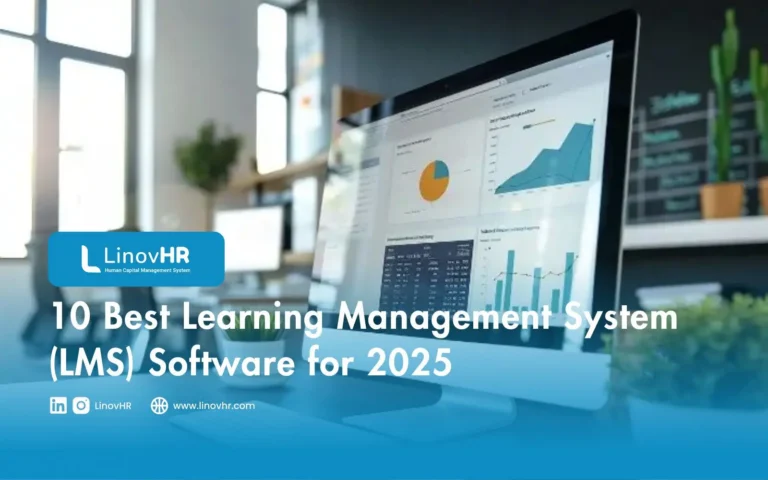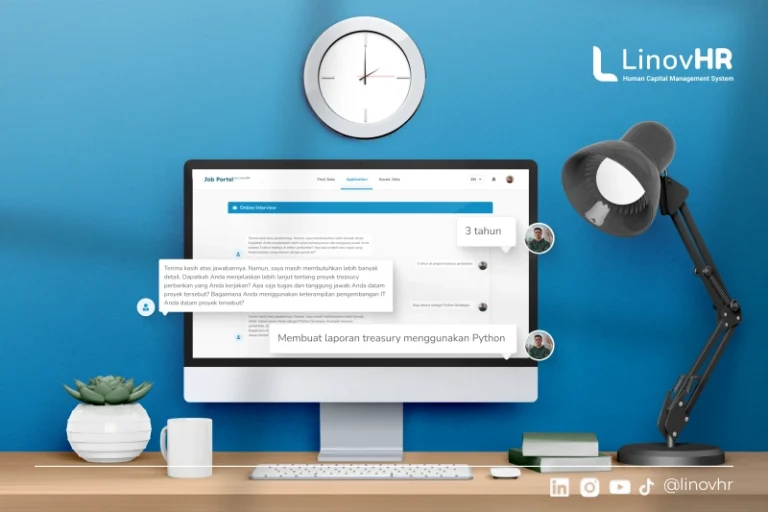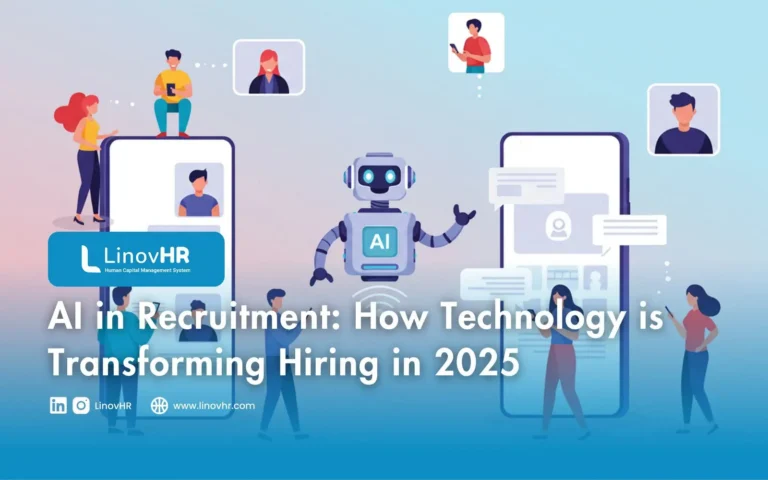In today’s fast-evolving business landscape, learning and development can no longer rely on outdated, manual training methods.
Organizations need a scalable and efficient way to build skills, support continuous learning, and keep their workforce future-ready. That’s where a Learning Management System (LMS) comes in.
A Learning Management System software enables companies to centralize employee training, deliver digital learning programs, track progress, and measure skill development, all in one platform.
From onboarding and compliance training to leadership development, the best LMS software helps companies accelerate growth while improving employee performance and engagement.
However, choosing the right platform can be overwhelming, with hundreds of options available.
To help you make the best decision, we’ve reviewed and compiled a list of the 10 best Learning Management System (LMS) software for 2025, based on features, usability, scalability, and business needs.
Let’s explore which LMS tools can support your organization’s learning goals and empower your people to succeed.
What Is a Learning Management System (LMS)?
A Learning Management System (LMS) is a digital platform, either installed as software or delivered as a cloud-based solution, that enables organizations to plan, deliver, and manage their training and development programs.
With a Learning Management System software, learning teams can create and organize training content, distribute it to employees, and track individual progress in one centralized place.
The primary goal of an LMS is to streamline and enhance the learning experience.
Instead of relying on manual training processes or scattered tools, an LMS software provides structured learning modules, interactive assessments, discussion forums, certifications, and analytics that support skill development and performance improvement.
Today, businesses, government institutions, and educational organizations use LMS platforms to increase productivity, improve onboarding experiences, boost employee engagement, and achieve greater scalability in learning programs.
By choosing the best LMS software, companies can:
- Deliver learning content anytime and anywhere
- Monitor employee participation and performance with real-time data
- Reduce training costs while improving training efficiency
- Support continuous learning and future-ready skill development
In short, a Learning Management System serves as the engine that powers modern learning, helping organizations build a skilled, engaged, and high-performing workforce.
Why Do Modern Companies Need LMS Software?
In today’s fast-changing business environment, organizations must continuously upskill their workforce to stay competitive.
This is why modern companies rely on Learning Management System software to deliver training that is fast, scalable, and cost-efficient.
Instead of arranging time-consuming in-person sessions, learners can access courses anytime and anywhere, making a Learning Management System (LMS) the backbone of digital learning.
With the best LMS software, HR and L&D teams can:
- Cut training costs by reducing travel, materials, and instructor time
- Automate onboarding to ensure new hires ramp up quickly and consistently
- Enhance compliance training with reminders, tracking, and certification
- Boost sales enablement through continuous product and skills training
- Improve customer education to help users gain maximum value from products
- Centralize training data for better progress tracking and decision-making
A modern LMS software also enhances learner engagement by offering personalized training paths, interactive content, and mobile accessibility, making learning more enjoyable and effective.
Most importantly, LMS platforms support organizations in their long-term strategy: building a skilled, adaptable, and high-performing workforce.
As digital transformation accelerates, companies without a Learning Management System risk falling behind, both in productivity and talent retention.
How to Choose the Best LMS Software
Selecting the best Learning Management System requires more than checking feature lists, it’s about finding a scalable solution that genuinely improves learning outcomes and business performance.
As more organizations adopt Learning Management System software to support digital transformation, there are several essential features to consider when choosing the right LMS software for your team.
1. Engaging and Interactive Learning
Training must keep learners motivated. Look for LMS platforms that support multimedia content, microlearning, quizzes, social learning features, and even gamification elements like badges or leaderboards. These tools help employees stay engaged and retain knowledge more effectively.
2. Personalized Learning Paths
Every department has different skill needs. The best Learning Management System software allows you to tailor training paths so employees can learn at their own pace while still meeting mandatory requirements. AI-driven recommendations are also a valuable feature to support personalized development.
3. Simple, User-Friendly Experience
A complicated interface creates barriers. The right LMS software should make it easy for learners to check required courses, track progress, and access training directly in the tools they already use, such as Microsoft Teams or other workflows.
4. Mobile and Flexible Learning
Employees should be able to learn anytime, anywhere. Choose an LMS that works seamlessly across devices, mobile, desktop, Android, iOS, without losing progress. This is especially crucial for remote teams, frontline workers, and gig roles.
5. Robust Reporting & Analytics
Training must be tied to measurable business outcomes. Strong analytics help HR and L&D teams monitor certification statuses, skills development, compliance completion, and effectiveness of learning initiatives.
6. Integrations & Scalability
Your Learning Management System must integrate with HR tools, collaboration apps, CRM, and course providers. It should support SCORM and other eLearning standards while growing alongside your organization.
7. Enterprise-Grade Security & Compliance
Because LMS platforms manage sensitive user data, ensure the system is compliant with privacy laws (like GDPR and CCPA) and uses strong encryption. Trust and safety are non-negotiable.
10 Best LMS Software for 2025
To help you choose the right platform that supports scalable, modern learning, here are the 10 best LMS software solutions to consider in 2025.
1. LinovHR
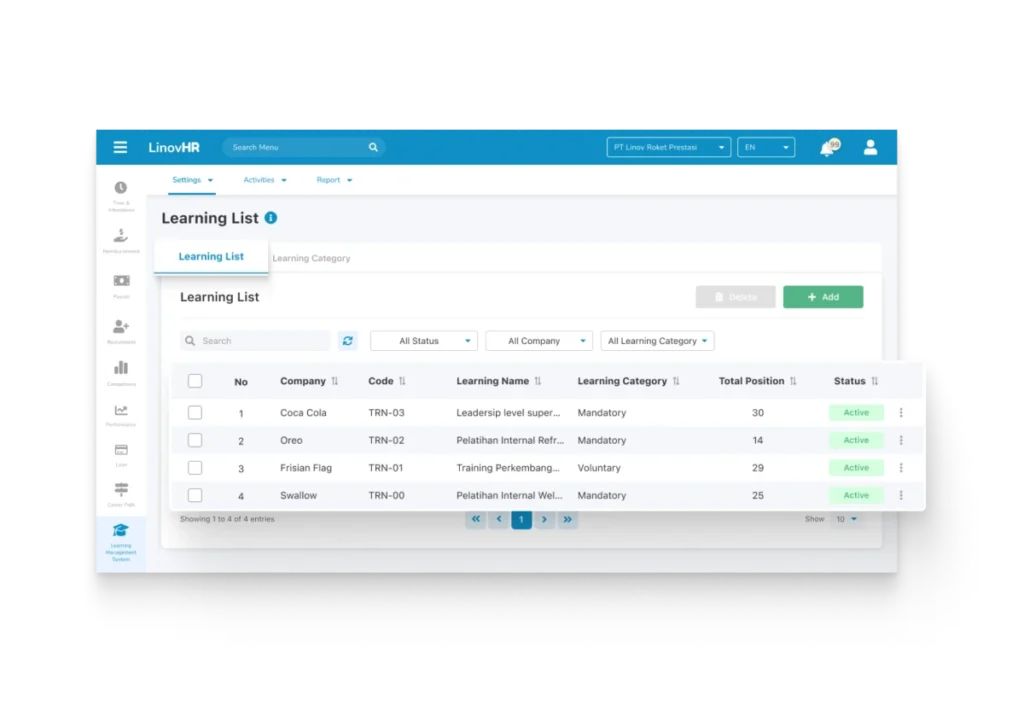
LinovHR Learning Management System Software is designed to help organizations manage and scale employee training effortlessly.
As a future ready LMS platform, LinovHR enables companies to digitize their learning and development programs, from onboarding to upskilling and compliance training, with seamless delivery through both web and mobile access.
Employees can learn anytime and anywhere while HR and admins maintain full control over training paths, assessment tools, and progress tracking.
With automated e-certificates, blended learning capabilities, and powerful analytics, LinovHR acts as an all-in-one solution for corporate learning in today’s hybrid workplace.
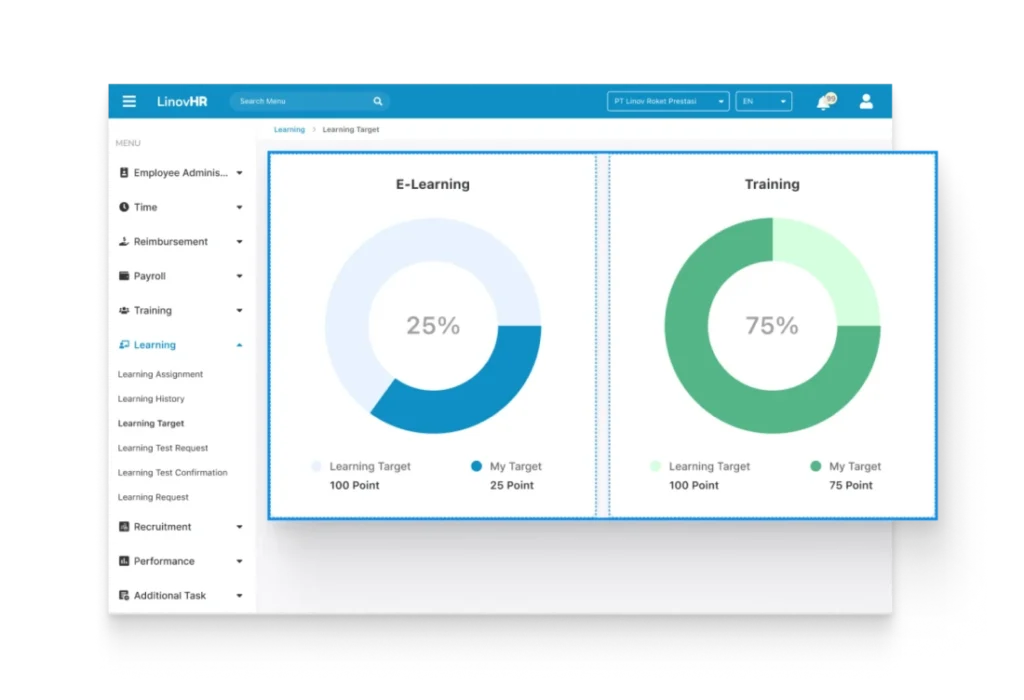
LinovHR stands out as one of the Best LMS Software choices in Indonesia due to its comprehensive features that support both HR operational efficiency and employee performance improvement.
It equips organizations with smart planning tools and deep insights to ensure every development program is truly targeted and impactful.
Key Features
For Employers
- Topics Management: Easily define training topics, objectives, and instructors (internal or external).
- Courses Setup: Upload diverse training materials (PDF, PPT, Video), add access restrictions, and enable blended learning delivery.
- Learning Plan: Map out detailed training timelines, quotas, and assessments, complete with downloadable materials and system-generated certificates.
- Session Overview: Monitor employee progress in real time, including attendance and scores, with automated reminders.
- Employee Request: Empower employees to request or suggest training while admins can assign training based on competency gaps.
For Employees
- E-Learning: Access online courses, track completion progress, review training history, and download supporting materials, from anywhere.
- Classroom Training: Register for offline sessions through ESS, view upcoming classes, and request new learning programs.
Pros & Cons
| Pros | Cons |
| • Fully supports digital transformation of employee training • Personalized learning paths with integrated pre-test, post-test & feedback • Blended learning (online & classroom) with QR-based attendance • Smart notifications to improve course completion rates • Mobile-friendly experience with flexible learning access • Automated e-certificates for completed courses | • Currently focused primarily on the Indonesian corporate market • Feature complexity may require training for new admins |
Why LinovHR?
LinovHR is more than just a Learning Management System, it is a strategic platform that helps HR teams strengthen workforce competencies with measurable outcomes. Through accurate analytics and a streamlined workflow, businesses can elevate employee quality while reducing administrative workload.
2. Moodle LMS
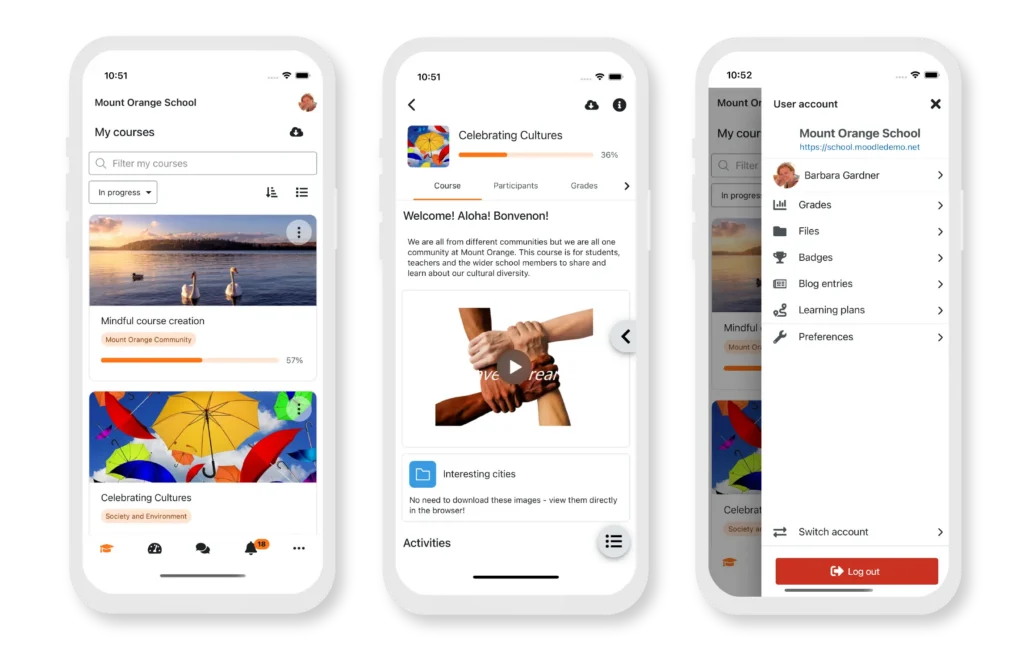
Moodle is a widely adopted open-source Learning Management System Software that allows organizations and educators to create structured and engaging online learning experiences.
Known for its flexibility and scalability, Moodle supports a wide range of customization options and integrations to meet diverse training needs.
It is used by millions worldwide, making it a trusted Best LMS Software solution for academic institutions and corporate environments.
Key Features
- Course Creation and Management: Build or upload courses, including SCORM, with flexible structures that fit diverse learning needs.
- Assessment and Tracking: Track learner progress through quizzes and assignments, supported by automated reporting and grade insights.
- Learner Engagement and Rewards: Boost motivation with digital badges and certificates awarded for achievements.
Pros & Cons
| Pros | Cons |
| • Highly customizable with no licensing fee • Scalable for small to enterprise-level deployments • Strong global community support and continuous feature updates | • Requires technical skills for setup and maintenance • Interface navigation can feel complex for beginners • Extensive customization may demand additional resources |
3. TalentLMS
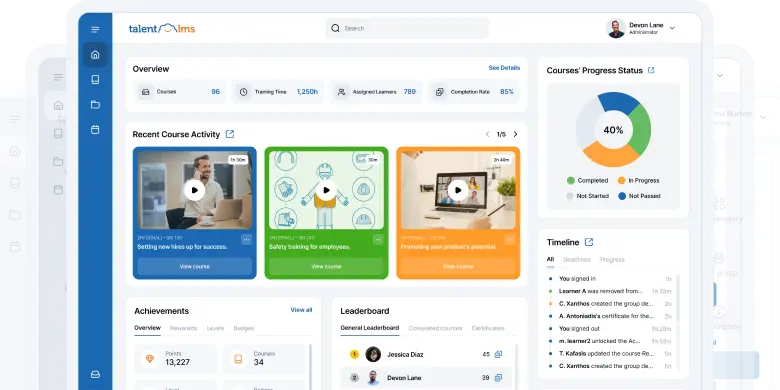
TalentLMS is a cloud-based Learning Management System Software built to simplify online training delivery for businesses and educational institutions of all sizes.
With strong automation tools and AI-powered features, this LMS Software helps organizations create training content faster, boost learner engagement, and scale employee development without technical complexity.
It’s designed to be user-friendly while offering advanced capabilities for modern workforce learning.
Key Features
- AI-Powered Learning Tools: Enhance content and learner support with AI-based creation, translation, real-time guidance, and automated visuals.
- Flexible Course Creation & Delivery: Deliver multimedia learning with structured paths, gamification, certifications, and offline mobile access.
- User and Admin Management: Simplify training operations with automation, custom permissions, bulk management, and seamless system integrations.
Pros & Cons
| Pros | Cons |
| • Intuitive interface for admins and learners • Strong AI tools for fast content creation & personalization • Scalable with powerful automation and integrations | • Full customization may require higher-tier plans • Costs may increase with add-ons like white-label apps • Some advanced features have a learning curve |
4. 360Learning LMS
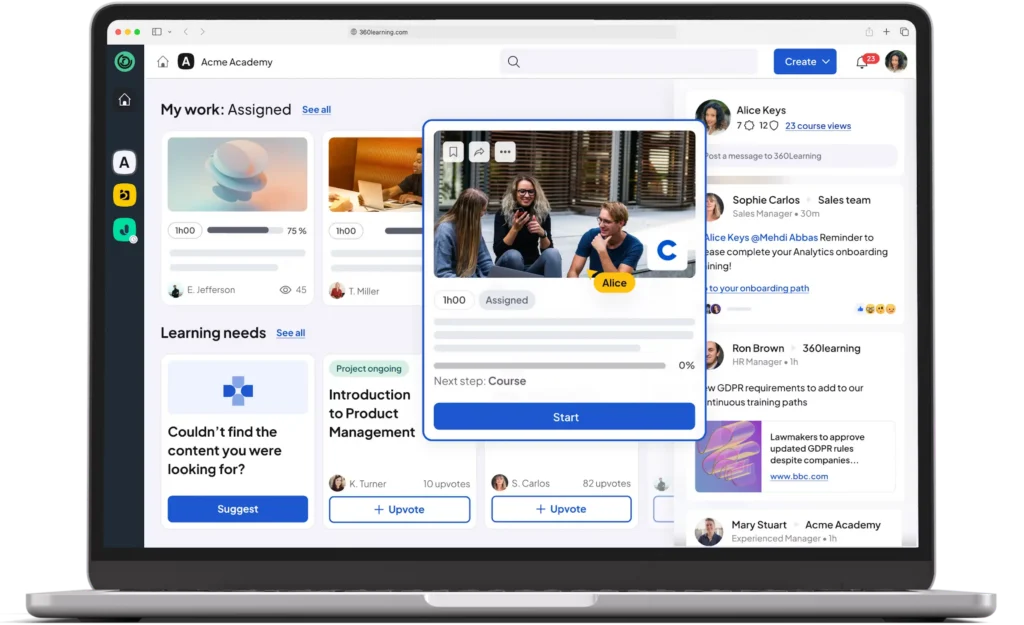
360Learning is an AI-powered Learning Management System that focuses on collaborative learning and peer‐driven knowledge sharing.
This LMS Software enables users to co-create training content, provide feedback, and learn together in a more social and engaging environment.
Designed for organizations that prioritize teamwork and continuous learning, 360Learning helps accelerate skill development through active employee participation.
Key Features
- Collaborative Learning: Encourage knowledge sharing through co-authoring, peer feedback, discussions, and user-generated content.
- Course Creation and Management: Build multimedia courses quickly using templates, interactive assessments, and instructor-led options.
- AI Assistance: Speed up course development with automated recommendations, translations, and quiz creation.
Pros & Cons
| Pros | Cons |
| • Strong collaborative learning and peer-to-peer engagement • AI features simplify content creation and personalization • Effective reporting and analytics for learning insights | • Less ideal for highly centralized or top-down training models • Limited advanced customization options • Pricing may be high for smaller budgets |
5. LearnWorlds
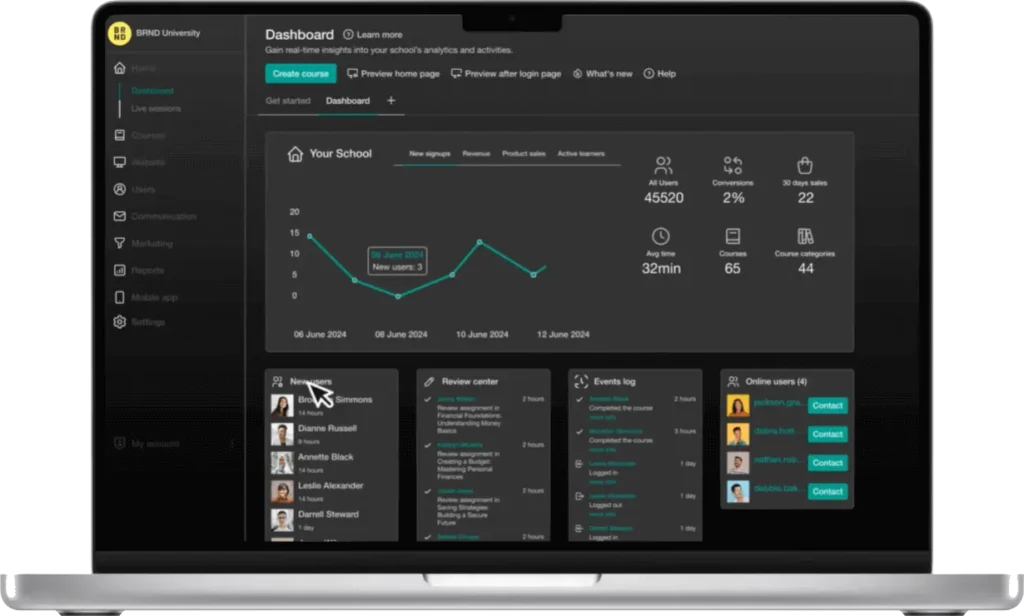
LearnWorlds is a cloud-based LMS built for educators and businesses that want to create, sell, and deliver interactive online courses.
It offers strong customization options without coding, along with powerful monetization tools like memberships and subscriptions.
With interactive video features and branded mobile app support, it is ideal for creators who prioritize engagement and scalability.
Key Features
- Interactive Course Creation: Includes tools to build interactive videos with embedded quizzes, pop-ups, and links, enhancing learner engagement.
- Course Sales and Monetization: Supports selling courses, subscriptions, memberships, bundles, and affiliate programs directly from the platform.
- Customization without Coding: Allows no-code branding and website creation, including landing pages and course portals.
Pros & Cons
| Pros | Cons |
| • Highly engaging learning experience with multimedia interactivity • Flexible branding and website customization for professionals • Comprehensive monetization tools for course sellers | • Learning curve can be challenging for beginners • Advanced features require higher-tier plans • Limited built-in marketing tools; external integrations often needed |
6. Docebo
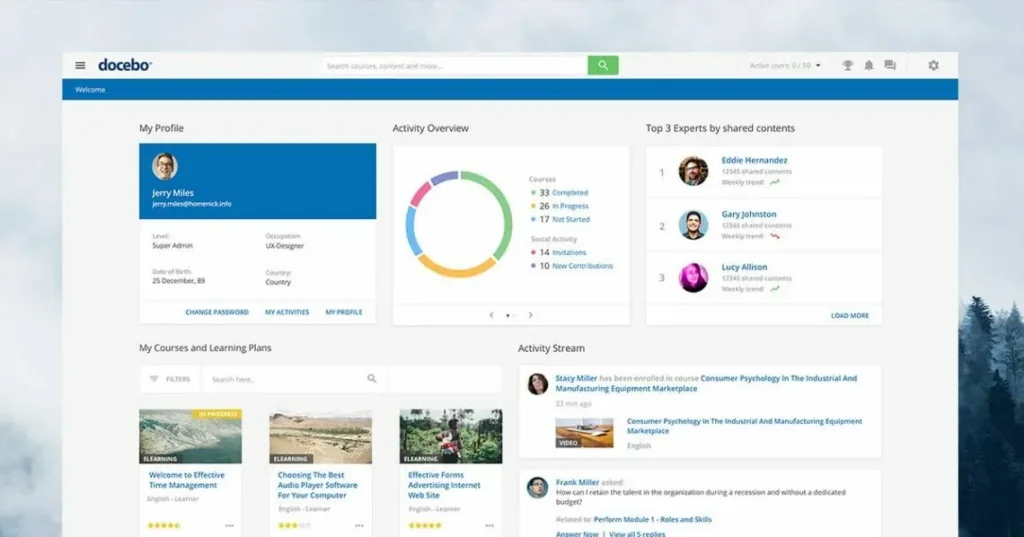
Docebo is a cloud-based LMS designed to help organizations deliver personalized and scalable learning experiences for employees, partners, and customers.
It offers strong automation and AI features to optimize training workflows and content creation.
With extensive integrations and global support, this LMS Software fits well for medium to large enterprises that need a flexible and enterprise-grade learning platform.
Key Features
- Ease of Use and Modern UI: Provide a clean, mobile-friendly experience with intuitive navigation and customizable branding.
- Content Creation and Management: Enable easy development and reuse of multimedia and standards-based content, enhanced by AI tools.
- Automation and AI: Streamline enrollments and translations while using generative AI to accelerate and improve course creation.
Pros & Cons
| Pros | Cons |
| • Powerful personalization and efficiency with AI automation • Extensive integrations support complex learning ecosystems • Strong global and multi-audience learning support | • Pricing is higher compared to simpler LMS options • Learning curve can be steep for administrators • Some customizations may require technical expertise |
7. Absorb LMS Software
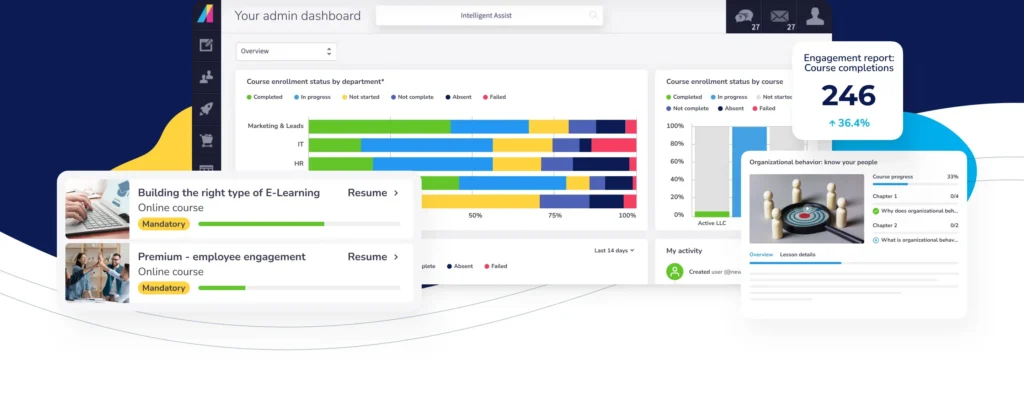
Absorb LMS is a cloud-based learning management system platform built for organizations that need scalable training for employees, customers, and partners.
It combines a clean user experience with strong administrative controls and automation to simplify learning management.
With robust reporting, mobile learning, and integrations, Absorb LMS Software supports both small and large-scale enterprise training needs.
Key Features
- Course Creation and Management: Build multimedia and standards-compliant courses with version control and structured learning paths.
- User Management: Manage learners efficiently with role-based access, grouping, and seamless single sign-on integration.
- Mobile Learning: Deliver on-the-go learning through responsive design, offline capability, and mobile app notifications.
Pros & Cons
| Pros | Cons |
| • User-friendly interface with powerful admin automation • Strong mobile capabilities enhance learning accessibility • Extensive analytics to monitor performance and compliance | • Feature complexity may require training for new admins • Some advanced capabilities may incur additional costs • Limited community-driven engagement compared to competitor platforms |
8. Litmos LMS Software
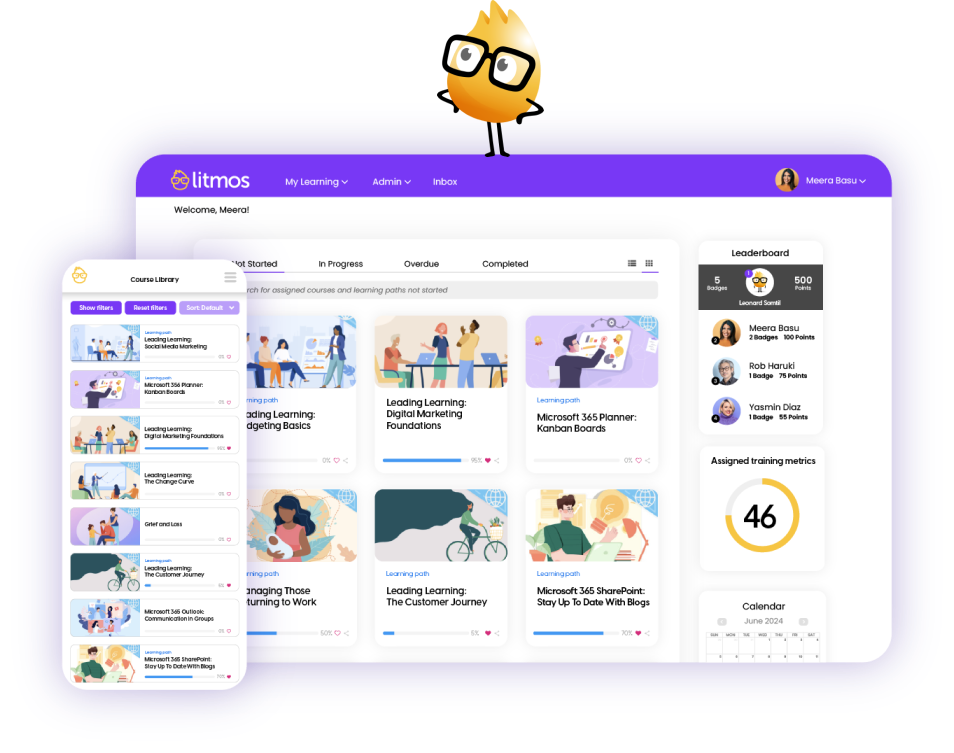
Litmos is a cloud-based Learning Management System designed for fast deployment, corporate training, and extended enterprise learning.
This LMS software offers a clean and intuitive interface with automation features to simplify course delivery.
With strong mobile capabilities and e-commerce support, Litmos is ideal for businesses looking to scale learning programs efficiently using the best LMS software practices.
Key Features
- Course Creation and Management: Create SCORM-ready courses with multimedia and reusable modules for faster course building.
- User Onboarding and Automation: Automate enrollments and access with smart rules, learning paths, and single sign-on.
- Mobile Learning: Support flexible learning with offline access, notifications, and fully responsive mobile apps.
Pros & Cons
| Pros | Cons |
| • Easy to use with quick implementation • Strong mobile and accessibility features • Automation tools streamline admin tasks | • Limited advanced customization for large enterprises • Pricing may not fit smaller organizations • Community and social learning features are less developed |
9. Cornerstone LMS
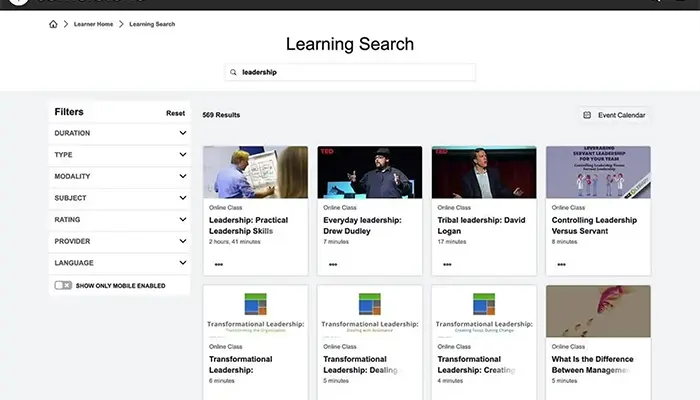
Cornerstone is an enterprise-grade Learning Management System designed to support large organizations with complex training, compliance, and talent development needs.
As part of a broader talent suite, this Learning Management System software integrates learning with performance and career development.
Its scalability, personalization features, and deep analytics make it a strong contender among the best LMS software for enterprise environments.
Key Features
- Personalized Learning Paths: Deliver customized learning journeys for different roles or individuals to boost engagement and skill growth.
- Content Management: Manage and update diverse learning content with real-time tracking and easy reuse.
- Compliance and Certification: Automate compliance tracking, certification renewals, and audit-ready reporting.
Pros & Cons
| Pros | Cons |
| • Easy to use with quick implementation • Strong mobile and accessibility features • Automation tools streamline admin tasks | • Limited advanced customization for large enterprises • Pricing may not fit smaller organizations • Community and social learning features are less developed |
10. iSpring Learn
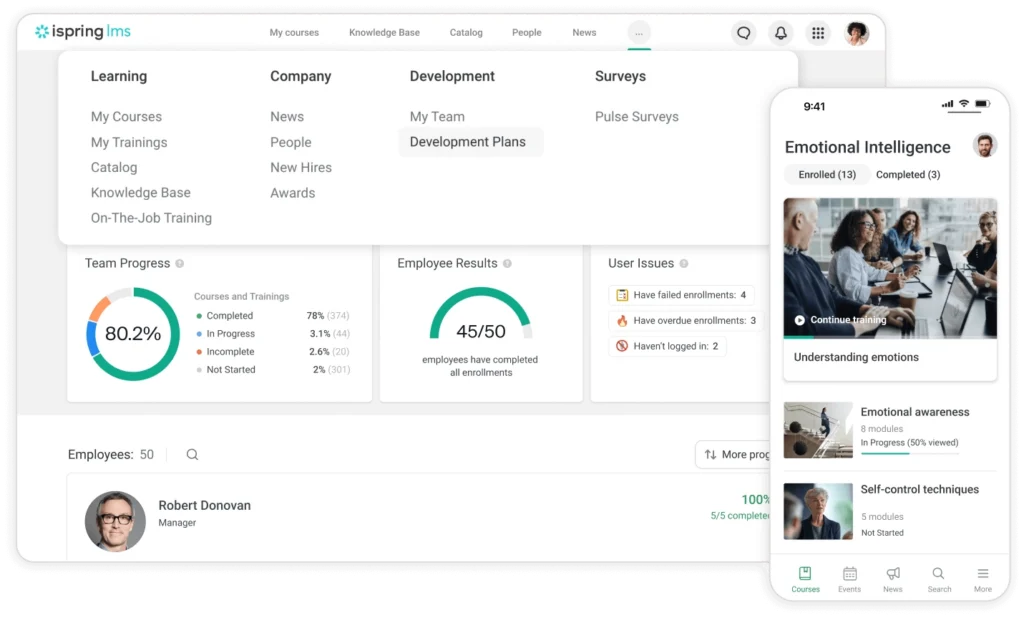
iSpring Learn is an intuitive Learning Management System designed for rapid training delivery and interactive content experiences.
It integrates seamlessly with iSpring Suite, enabling quick course creation from PowerPoint and multimedia materials.
This Learning Management System software is ideal for SMBs seeking simplicity and fast deployment while still offering essential features found in many best LMS software options.
Key Features
- Content Management: Upload and organize multimedia courses quickly, including SCORM/AICC modules, for streamlined delivery.
- Course Creation: Build interactive learning content in PowerPoint with iSpring Suite and publish to the platform in one click.
- Learning Tracks: Structure step-by-step learning paths that guide learners through required chapters in order.
Pros & Cons
| Pros | Cons |
| • Easy to use with rapid setup • Engaging content support including quizzes and simulations • Cost-effective for small to medium businesses | • Limited UI and advanced customization • Less suitable for very large enterprises • Heavy reliance on iSpring Suite for content creation |
Why LinovHR LMS Stands Out
LinovHR’s Learning Management System delivers a comprehensive way for organizations to build, manage, and optimize employee training programs.
As one of the Best LMS Software options for businesses in Indonesia, it supports tailored learning paths, blended learning formats, and smart automation to streamline every step of corporate training.
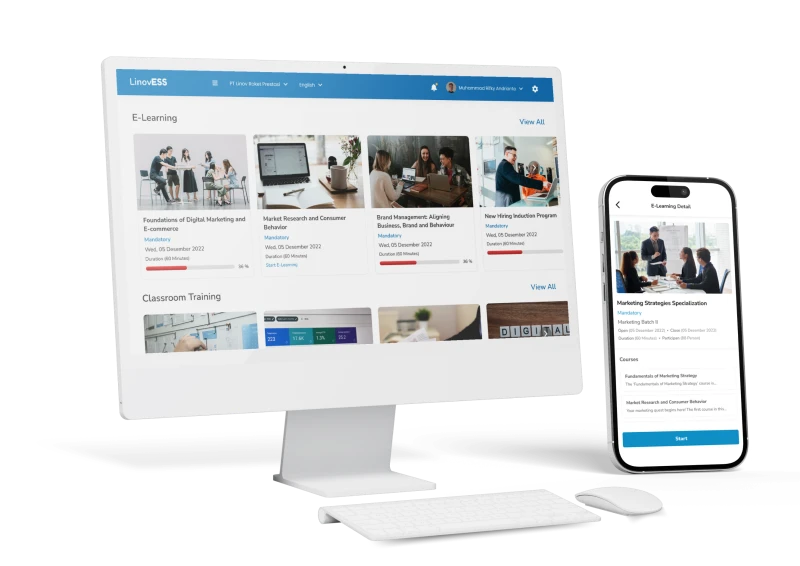
With intuitive access via web and mobile, this Learning Management System Software ensures employees can complete development programs anytime, anywhere, while HR teams maintain full visibility over progress and performance.
More than just delivering courses, LinovHR LMS Software enables detailed training planning, content management, and automated e-certifications to boost skill development and productivity.
Its all-in-one platform makes it easier for organizations to align training initiatives with business goals, reduce administrative burdens, and ensure learning becomes measurable and impactful across the workforce.
Final Thoughts
Choosing the right Learning Management System is essential for building a modern and future-ready workforce.
With the growing need for flexible digital learning, companies should carefully compare Learning Management System Software based on features, scalability, and budget to ensure the solution fits their training goals.
A well designed LMS Software helps organizations improve employee capabilities while keeping training measurable and efficient.
As one of the Best LMS Software choices in Indonesia, LinovHR provides a reliable and user-friendly platform that supports ongoing learning and long-term business growth.
Ready to transform your employee training?
Contact LinovHR today to request a free demo and discover how its LMS can elevate your organization’s learning experience!


